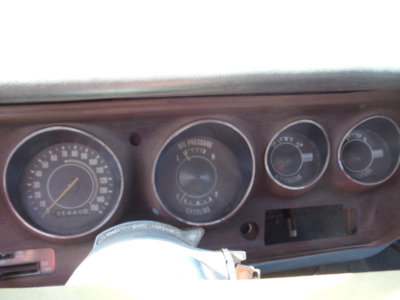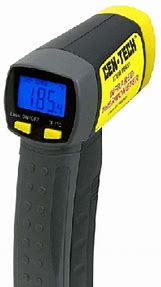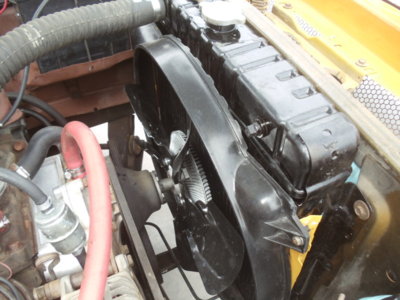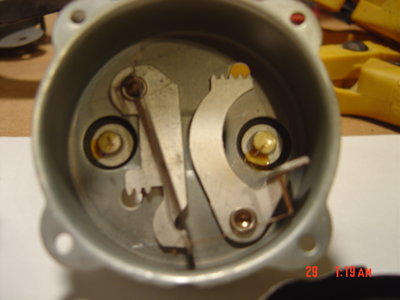Dibbons
Well-Known Member
- Local time
- 9:50 PM
- Joined
- Nov 29, 2014
- Messages
- 4,753
- Reaction score
- 5,471
- Location
- La Paz, B.C.S., Mexico
The '71-'74 rallye dash factory coolant temperature gauge only has two marks. Up to the first mark seems to be when the motor is considered "cold". Between the two marks seems to be considered "normal range." Anything past the second mark seems to be considered "overheating". That's how I see it anyway.
Before I had my gauges professionally restored (including the ammeter to voltmeter changeover) at operating temperature the needle would go past the first line indicator by a little bit.
Now I notice (after the "restoration") my coolant temperature gauge reads just a little bit lower at operating temperature (needle seems to ride directly over the first line indicator). Not a big difference.
I brought out my Autozone purchased infrared thermometer to verify what was what. After a twenty-minute drive and a few more minutes idling in the driveway, I got these readings:
a) on the upper radiator hose about an inch above the hose clamp that holds it onto the water outlet/thermostat housing (which is rubber) 190 degrees.
b) on the base of the thermostat housing (which is metal) 205 degrees.
I forgot to mention I am running a Mopar performance five-blade viscous-drive fan, aftermarket repro shroud, aftermarket replacement 22 inch radiator, no coolant recovery system.
In warmer ambient temperatures, obviously the coolant temperature will ride more in the center of the gauge. It will be interesting to compare that reading during the summer months to get some idea of how "hot" the middle of the gauge reading really is.
I don't remember what thermostat is installed (whatever the Pep Boys girl gave me for a 1972 Plymouth Satellite Sebring Plus 318/auto no A/C).



Before I had my gauges professionally restored (including the ammeter to voltmeter changeover) at operating temperature the needle would go past the first line indicator by a little bit.
Now I notice (after the "restoration") my coolant temperature gauge reads just a little bit lower at operating temperature (needle seems to ride directly over the first line indicator). Not a big difference.
I brought out my Autozone purchased infrared thermometer to verify what was what. After a twenty-minute drive and a few more minutes idling in the driveway, I got these readings:
a) on the upper radiator hose about an inch above the hose clamp that holds it onto the water outlet/thermostat housing (which is rubber) 190 degrees.
b) on the base of the thermostat housing (which is metal) 205 degrees.
I forgot to mention I am running a Mopar performance five-blade viscous-drive fan, aftermarket repro shroud, aftermarket replacement 22 inch radiator, no coolant recovery system.
In warmer ambient temperatures, obviously the coolant temperature will ride more in the center of the gauge. It will be interesting to compare that reading during the summer months to get some idea of how "hot" the middle of the gauge reading really is.
I don't remember what thermostat is installed (whatever the Pep Boys girl gave me for a 1972 Plymouth Satellite Sebring Plus 318/auto no A/C).




















